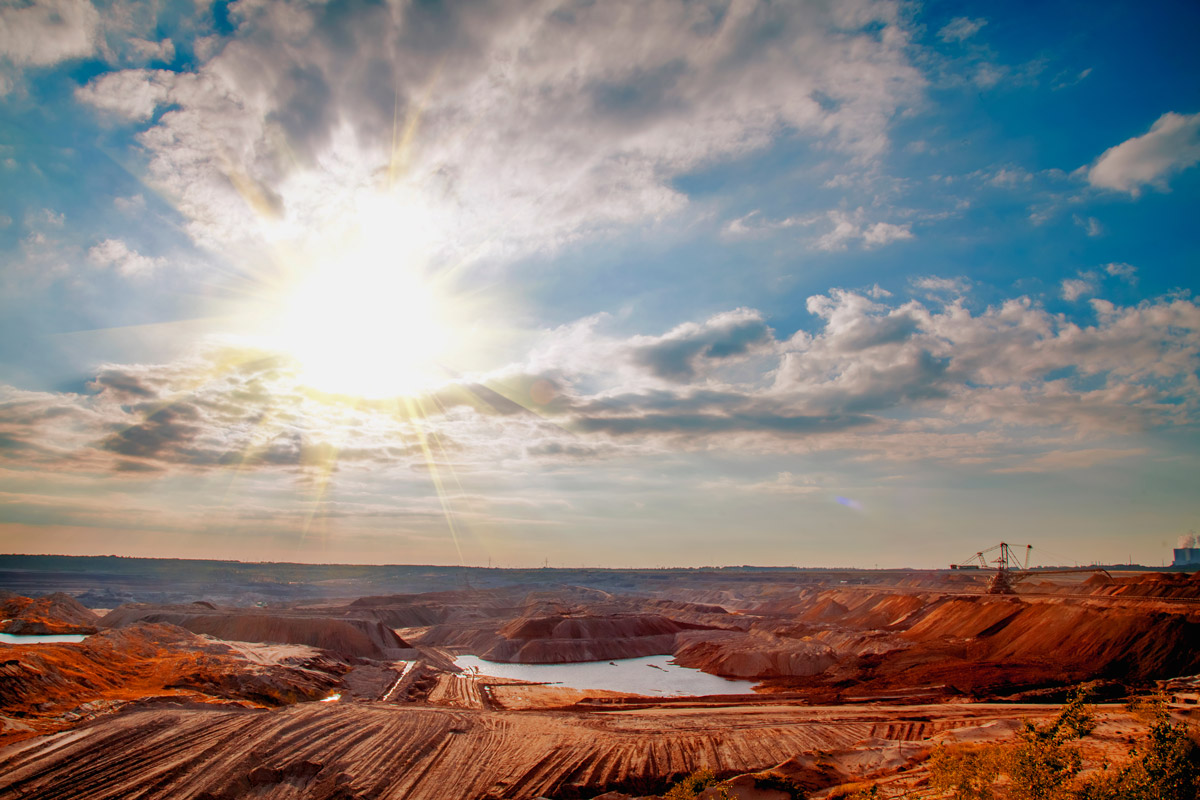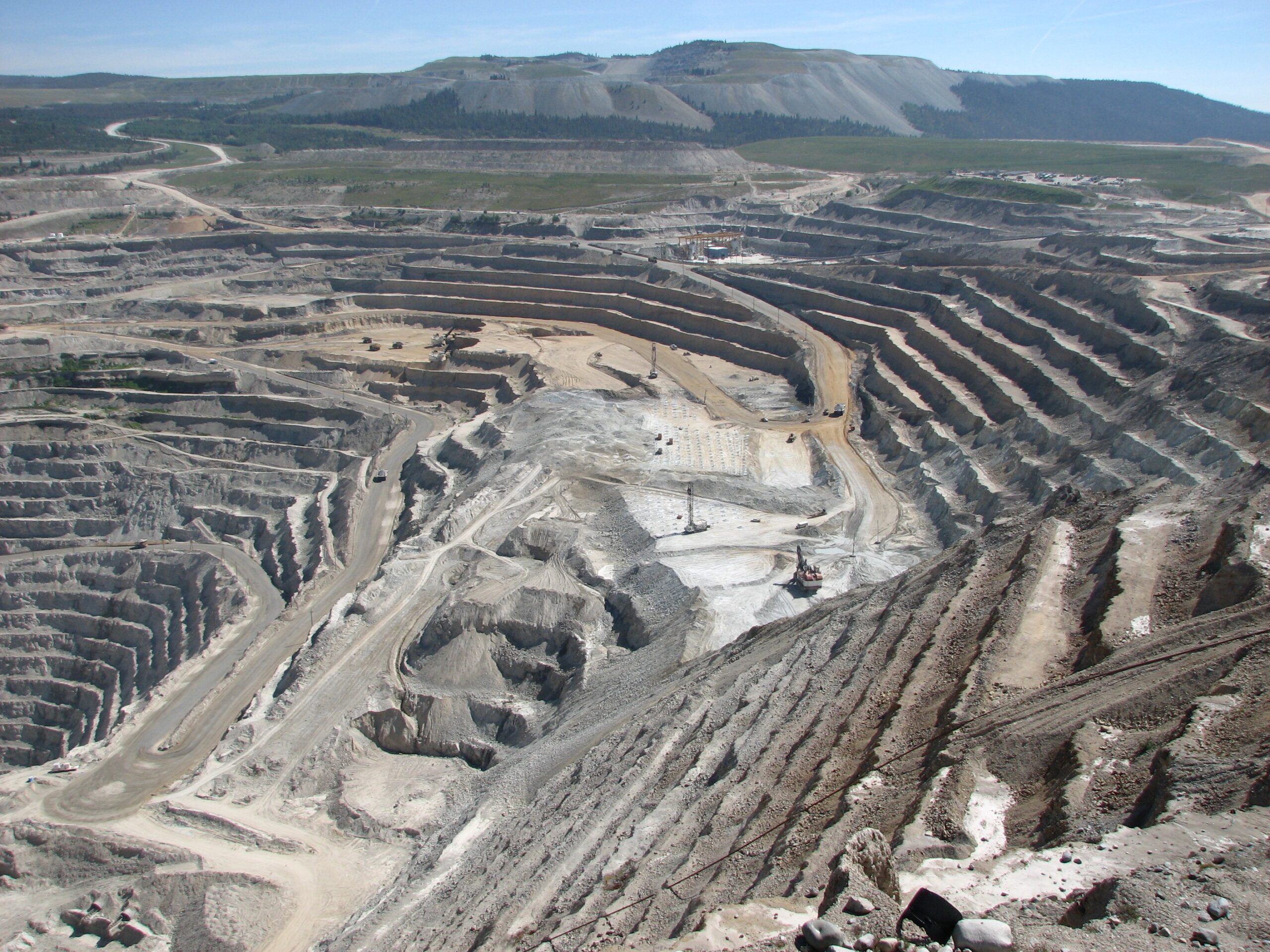
Extraction
Whether it is worthwhile to mine copper ore depends on various factors. Of course, the content of the ore and the overall extent of the deposit are most important, but so is the existing infrastructure. Copper ores are extracted both by underground mining and by opencast mining. In the past, a deposit with at least 1 to 2 % copper content was considered worth mining – today the minimum content for large opencast mines is 0.3 %. The huge porphyry copper deposits with a low copper content of the ore (<1 % Cu) can only be exploited economically by the more cost-effective open-pit mining and with the most modern mining methods.
The terraced open pits of these copper deposits are the largest ore mines in the world. Their dimensions often extend over an area of more than one square kilometre with mining depths of several hundred metres. Currently, about 75 % of the primary copper extracted comes from open pits. In many cases, originally sulphide ore deposits have been transformed into oxide minerals by oxidising influences in the area of the earth’s surface. Therefore, in many deposits, mining starts from the earth’s surface with the extraction of oxidic copper minerals in order to gradually reach the area of sulphidic ores with increasing depth. Depending on the nature of these processes, deposits of varying size and richness can be formed.
An ore is a rock in which enough valuable mineral is found to be worth extracting. For copper, this means that a so-called extraction makes sense when there are more than 2 kg of copper in 1,000 kg of ore (0.2 %). Copper minerals are found in various forms, with only a small number being mined. Copper ores occur frequently. For example, copper is extracted from chalcopyrite (chalcopyrite, CuFeS2), chalcocite (chalcopyrite, Cu2S), and less frequently from bornite (variegated chalcopyrite, Cu5FeS4), atacamite (CuCl2- Cu(OH)2), malachite (Cu2[(OH)2|CO3]) and other ores. Already in 2010, 636 copper minerals were known. The sulphide ores are the most commonly used.
The extracted ores have considerably lower copper contents than the pure copper minerals. The ores mined today often contain only about 1 % Cu, in some large mines even only about 0.5 % Cu. The latter can only be economically extracted in cheaper opencast mines using the most modern mining methods. The terraced open-pit copper mines are the largest ore mines in the world. Although much less copper is produced than iron, the amount of rock moved equals that of the entire iron mining industry in the world.

Are you looking for a different content?